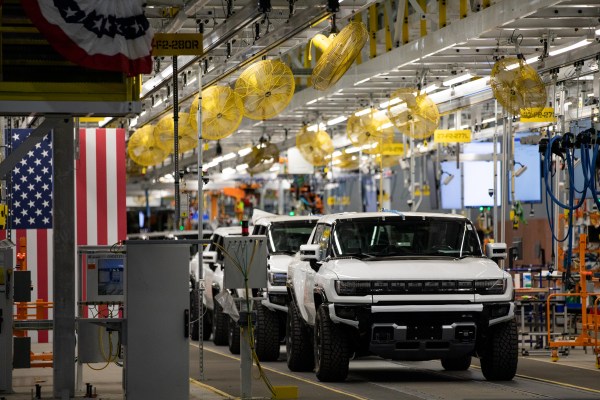[ad_1]
America Division of Vitality’s $15.5 Billion Funding in Electrical Autos

America Division of Vitality is dedicating $15.5 billion to assist the transition to electrical automobiles.
President Joe Biden’s Investing in America agenda features a important funding of $15.5 billion by america Division of Vitality (DOE) to speed up the transition to electrical automobiles (EVs) and construct a strong home manufacturing ecosystem. By offering monetary assist, the DOE goals to encourage automakers and suppliers to retool their vegetation for producing electrical, hybrid, and hydrogen gas cell EVs. This strategic funding aligns with the administration’s purpose of making high-paying manufacturing jobs throughout the nation.
Selling Automotive Manufacturing Conversion
Nearly all of the funding, roughly $12 billion, can be allotted to automotive manufacturing conversion initiatives for light-, medium-, and heavy-duty EVs. This funding can be distributed via a mixture of grants amounting to $2 billion and loans of $10 billion. By incentivizing automakers and suppliers to remodel their manufacturing capabilities, the DOE goals to drive the mass adoption of electrical automobiles and scale back reliance on conventional inner combustion engine automobiles.
Increasing Home Battery Manufacturing
Along with supporting automakers, the DOE will direct $3.5 billion in the direction of increasing home battery manufacturing. This funding will concentrate on establishing battery manufacturing services and enhancing the nation’s grid infrastructure. Traditionally, battery supplies and elements have largely been imported from different nations, notably China. Nonetheless, the disruptions brought on by the COVID-19 pandemic highlighted the necessity for a extra self-reliant provide chain. By investing in home battery manufacturing, america can scale back its dependence on imports and create a safe and sustainable supply of battery supplies.
This funding for battery supplies and manufacturing represents the second tranche of assist supplied by the DOE. It displays the federal government’s dedication to driving the event of a strong battery manufacturing business inside america.
The Onshoring Pattern and the Inflation Discount Act
A rising variety of automakers and battery producers have acknowledged the significance of building battery manufacturing services on U.S. soil. The pattern in the direction of onshoring gained momentum because the pandemic disrupted world provide chains, making it tough to entry crucial battery supplies. This shift aligns with the passage of the Inflation Discount Act (IRA) in August 2022, which provides important incentives for home manufacturing. Nonetheless, the Treasury’s steering on a number of initiatives inside the IRA remains to be pending.
Driving Job Creation and Financial Progress
The numerous investments made by the DOE in home EV and battery manufacturing align with the Biden administration’s imaginative and prescient of making high-paying manufacturing jobs for Individuals. The presence of automotive manufacturing vegetation can stimulate native economies and supply well-paying jobs for communities. The DOE will prioritize grants and financing for corporations based mostly in communities with a historical past of automotive manufacturing. Desire can even be given to initiatives that decide to paying excessive wages to manufacturing staff and preserve collective bargaining agreements.
Conclusion
America Division of Vitality’s $15.5 billion funding within the transition to electrical automobiles and home battery manufacturing marks a major milestone within the nation’s push in the direction of a sustainable and self-reliant automotive business. By incentivizing automakers, suppliers, and battery producers, the DOE goals to speed up the adoption of electrical automobiles, enhance home manufacturing capabilities, and create high-paying jobs. This strategic funding underscores the federal government’s dedication to a cleaner, greener future whereas driving financial progress and resilience.
FAQs
1. How a lot funding is america Division of Vitality offering for the transition to electrical automobiles?
America Division of Vitality is offering $15.5 billion to assist the transition to electrical automobiles.
2. The place will the vast majority of the funding be allotted?
Nearly all of the funding, roughly $12 billion, can be allotted to automotive manufacturing conversion initiatives for light-, medium-, and heavy-duty electrical automobiles.
3. What’s the focus of the $3.5 billion allocation?
The $3.5 billion allocation will concentrate on increasing home battery manufacturing, together with establishing battery manufacturing services and enhancing the nation’s grid infrastructure.
4. Why is there a necessity for home battery manufacturing?
The disruptions brought on by the COVID-19 pandemic highlighted the significance of a self-reliant provide chain for battery supplies. By investing in home manufacturing, america can scale back its dependence on imports and create a safe and sustainable supply of battery supplies.
5. How does the funding align with the Biden administration’s targets?
The funding aligns with the Biden administration’s purpose of making high-paying manufacturing jobs throughout the nation, notably in communities with a historical past of automotive manufacturing. The presence of automotive manufacturing vegetation can stimulate native economies and supply well-paying jobs for communities.
[ad_2]
For extra info, please refer this link
